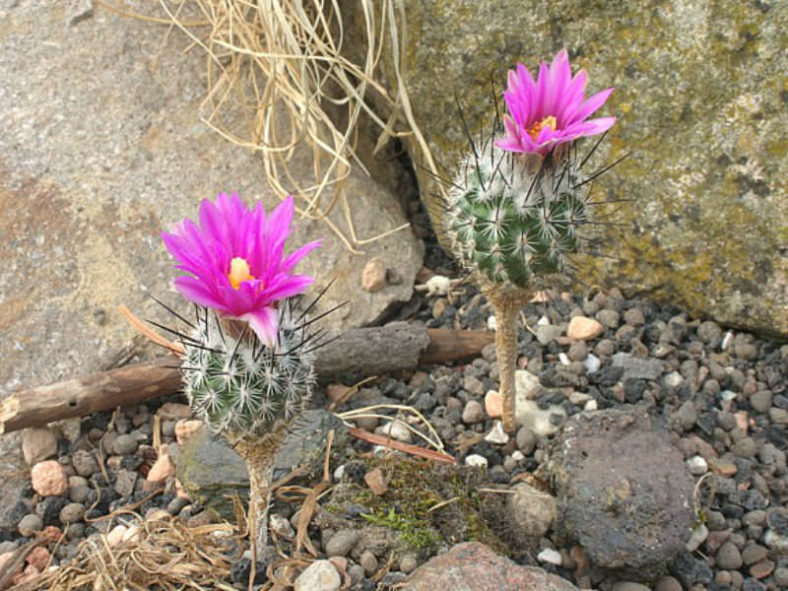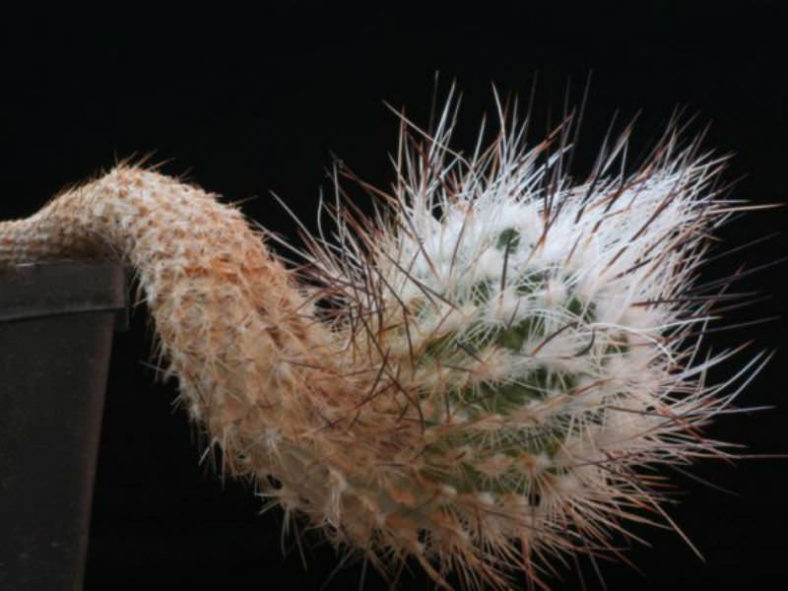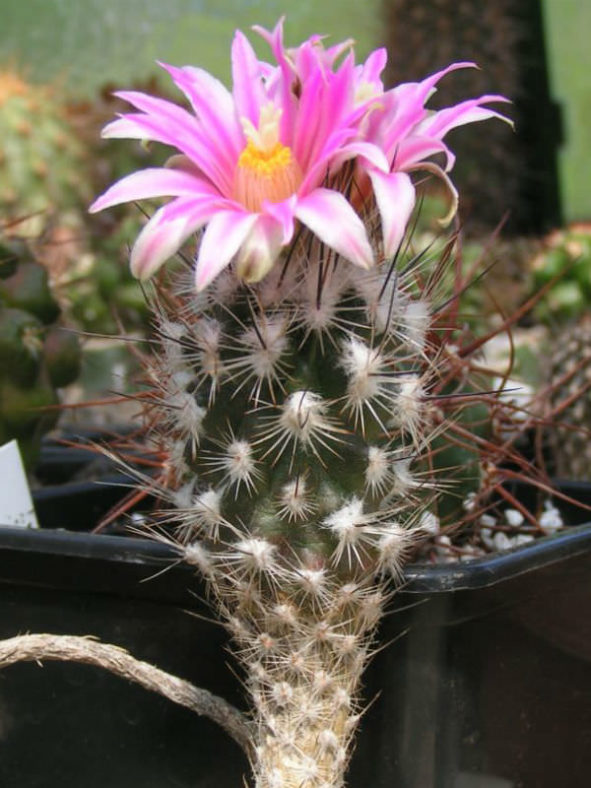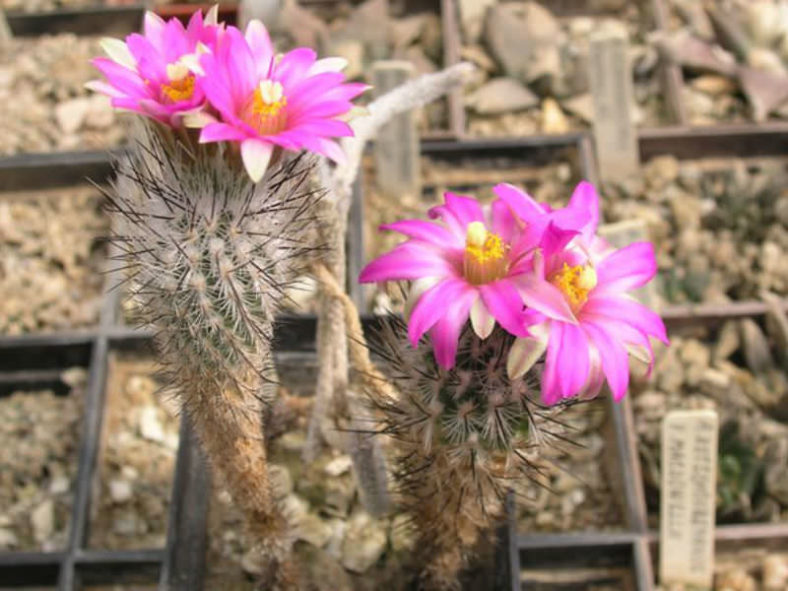Scientific Name
Rapicactus subterraneus (Backeb.) Buxb. & Oehme
Synonym(s)
Echinocactus subterraneus, Gymnocactus subterraneus, Neolloydia subterranea, Thelocactus subterraneus, Turbinicarpus subterraneus
Scientific Classification
Family: Cactaceae
Subfamily: Cactoideae
Tribe: Cacteae
Genus: Rapicactus
Etymology
The specific epithet "subterraneus" (pronounced "sub-ter-RAY-nee-us") means "underground, subterranean" and refers to the large tuberose root of this species.
Origin
Rapicactus subterraneus is endemic to Mexico. Its natural habitat is hot deserts.
Description
Rapicactus subterraneus, formerly known as Turbinicarpus subterraneus, is a small cactus with an erect or prostrate, bluish-green stem flaring out after a long, slender neck that separates the large tuberose root from the enlarged apical part. It is one of the most unusual and fascinating cacti. The stem is club-shaped, and can grow up to 6 inches (15 cm) tall and 1.2 inches (3 cm) in diameter. Each areole bears two blackish-gray central spines, measuring up to 0.9 inches (2.2 cm) in length, and 16 to 19 white radial spines, each about 0.2 inches (0.5 cm) long.
The flowers are whitish to magenta-colored with pink or brown mid-stripe, and can reach a length of 1 inch (2.5 cm) and a diameter of 1.2 inches (3 cm). The fruits are small, greenish-brown, relatively dry, and unattractive.

Hardiness
USDA hardiness zones 9b to 11b: from 25°F (-3.9°C) to 50°F (10°C).
How to Grow and Care
Turbinicarpus prefer to be in a well-ventilated position, exposed to full sun, to maintain a good body color and healthy spine development. When watering, the golden rule is "never water when the soil is still damp." This is the one error that will certainly kill any plant. Watering should commence in the spring, depending on the weather conditions. Initially, the plants should be given a gentle light spray to encourage them to grow.
These cacti can withstand high summer temperatures and benefit from proper ventilation. Do not be tempted to overcrowd the plants. They will be far happier with a bit of space to allow the air to circulate. Winter temperatures can be as low as 44°F to 46°F (7°C to 8°C). Indeed, the plants require these low temperatures to ensure a sustained dormant period, which in turn promotes proper growth and flowering the following growing season.
Learn more at How to Grow and Care for Turbinicarpus.
Links
- Back to genus Rapicactus
- Succupedia: Browse succulents by Scientific Name, Common Name, Genus, Family, USDA Hardiness Zone, Origin, or cacti by Genus
Photo Gallery
Click on a photo to see a larger version.


